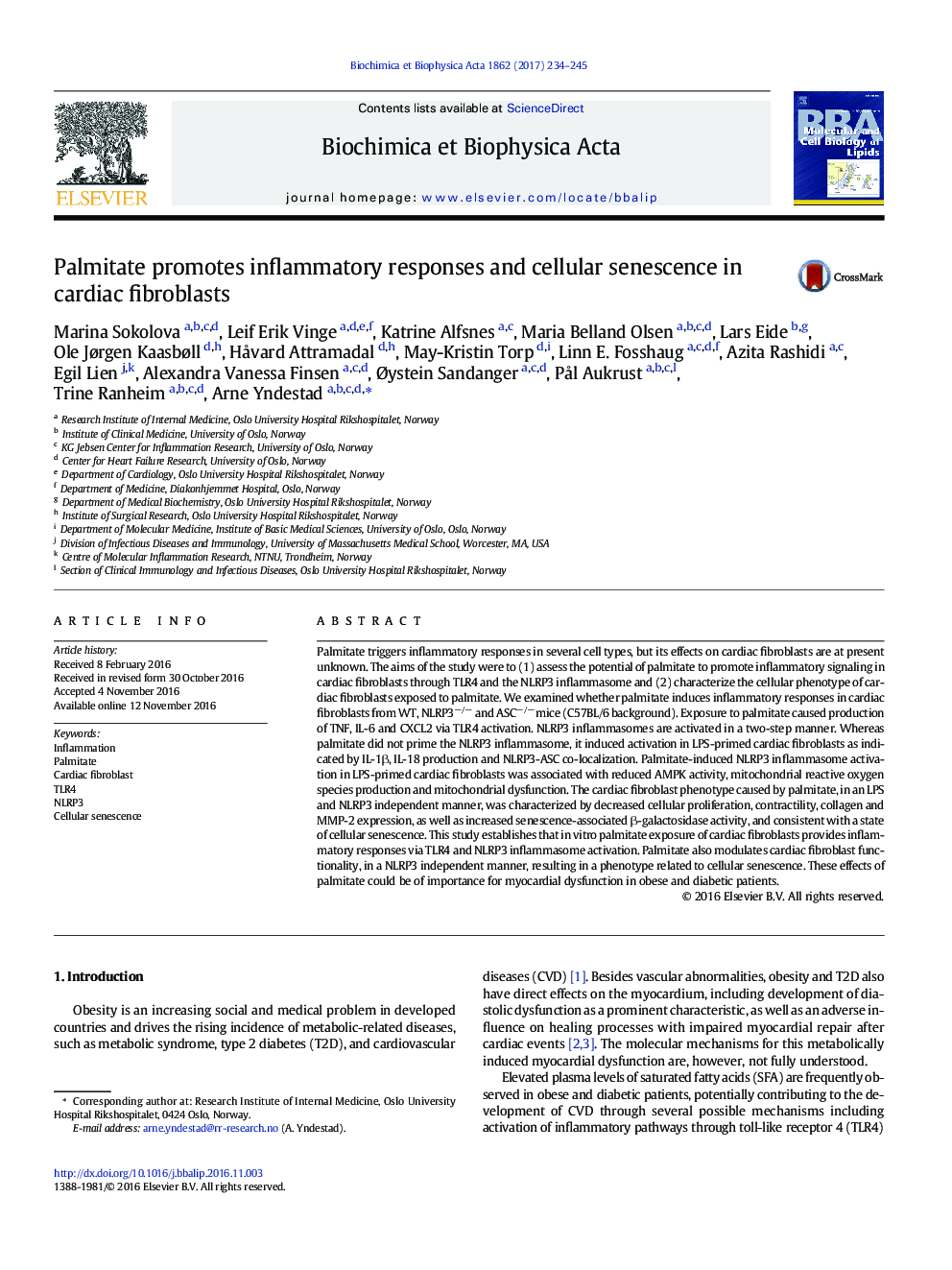| کد مقاله | کد نشریه | سال انتشار | مقاله انگلیسی | نسخه تمام متن |
|---|---|---|---|---|
| 5508490 | 1537694 | 2017 | 12 صفحه PDF | دانلود رایگان |
• Obese and type 2 diabetes patients have increased mortality after acute coronary syndromes.
• Plasma levels of palmitate are elevated in obese and patients with type 2 diabetes.
• Palmitate induces inflammation via TLR4 and NLRP3 in cardiac fibroblasts.
• Palmitate exposure causes cardiac fibroblast senescence.
• These effects can be important for myocardial dysfunction in diabetic patients.
Palmitate triggers inflammatory responses in several cell types, but its effects on cardiac fibroblasts are at present unknown. The aims of the study were to (1) assess the potential of palmitate to promote inflammatory signaling in cardiac fibroblasts through TLR4 and the NLRP3 inflammasome and (2) characterize the cellular phenotype of cardiac fibroblasts exposed to palmitate. We examined whether palmitate induces inflammatory responses in cardiac fibroblasts from WT, NLRP3−/− and ASC−/− mice (C57BL/6 background). Exposure to palmitate caused production of TNF, IL-6 and CXCL2 via TLR4 activation. NLRP3 inflammasomes are activated in a two-step manner. Whereas palmitate did not prime the NLRP3 inflammasome, it induced activation in LPS-primed cardiac fibroblasts as indicated by IL-1β, IL-18 production and NLRP3-ASC co-localization. Palmitate-induced NLRP3 inflammasome activation in LPS-primed cardiac fibroblasts was associated with reduced AMPK activity, mitochondrial reactive oxygen species production and mitochondrial dysfunction. The cardiac fibroblast phenotype caused by palmitate, in an LPS and NLRP3 independent manner, was characterized by decreased cellular proliferation, contractility, collagen and MMP-2 expression, as well as increased senescence-associated β-galactosidase activity, and consistent with a state of cellular senescence. This study establishes that in vitro palmitate exposure of cardiac fibroblasts provides inflammatory responses via TLR4 and NLRP3 inflammasome activation. Palmitate also modulates cardiac fibroblast functionality, in a NLRP3 independent manner, resulting in a phenotype related to cellular senescence. These effects of palmitate could be of importance for myocardial dysfunction in obese and diabetic patients.
Figure optionsDownload high-quality image (185 K)Download as PowerPoint slide
Journal: Biochimica et Biophysica Acta (BBA) - Molecular and Cell Biology of Lipids - Volume 1862, Issue 2, February 2017, Pages 234–245
